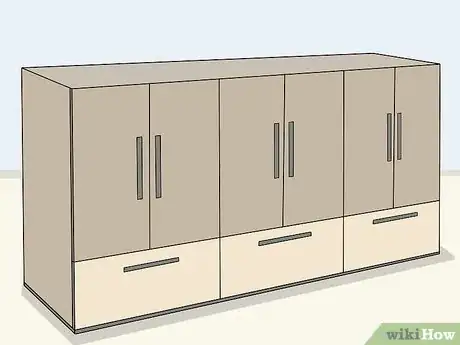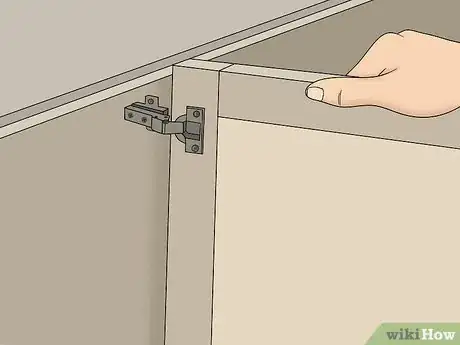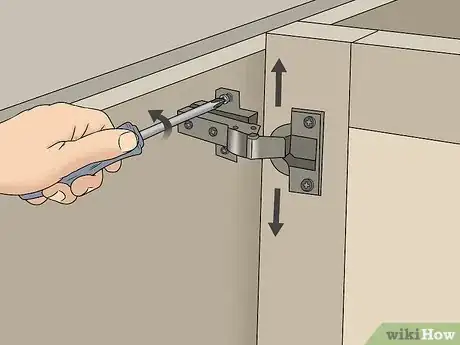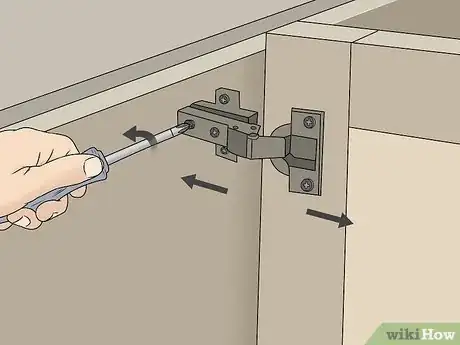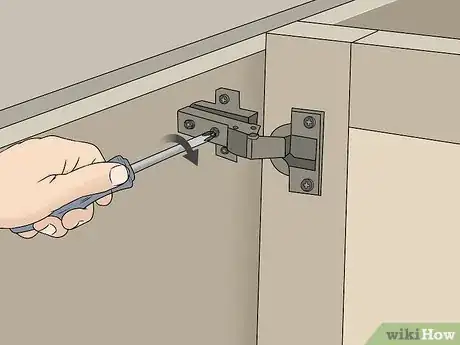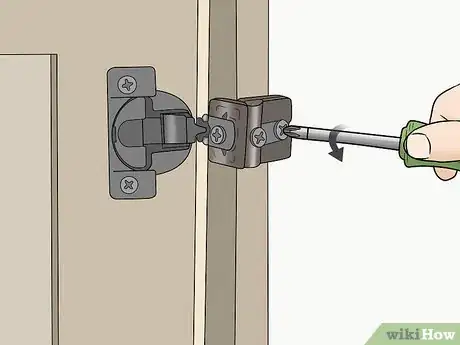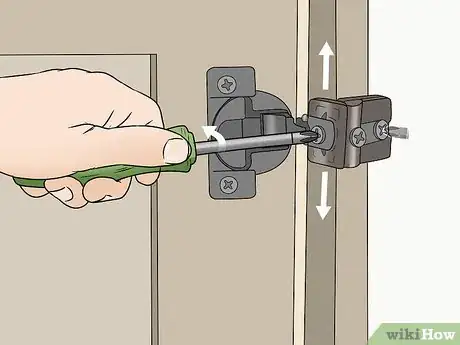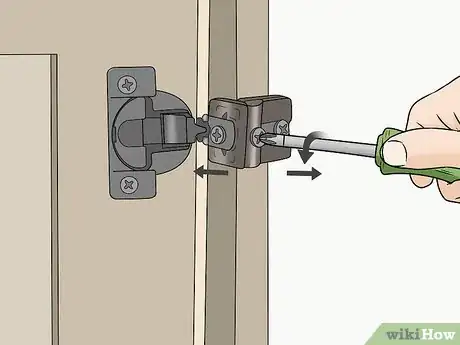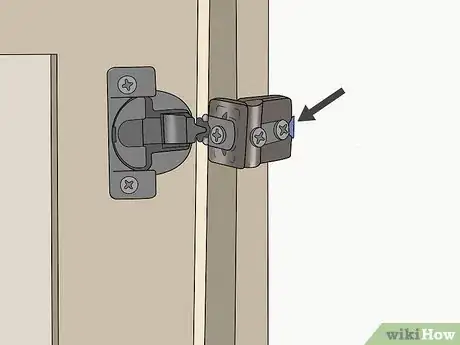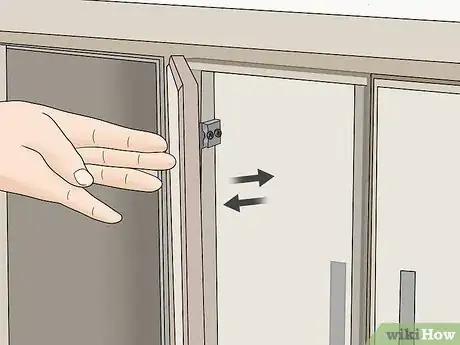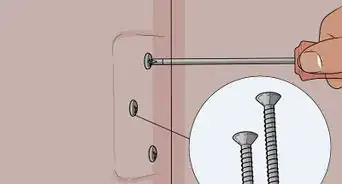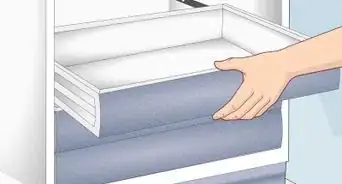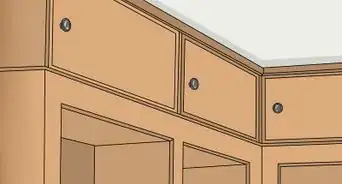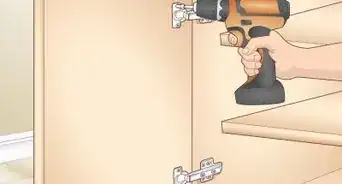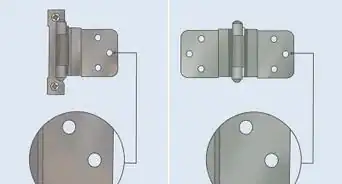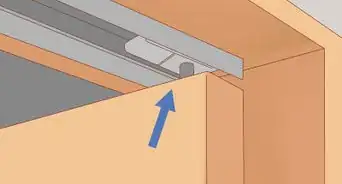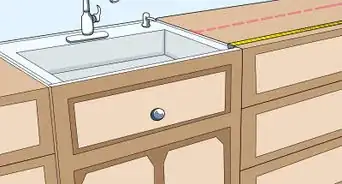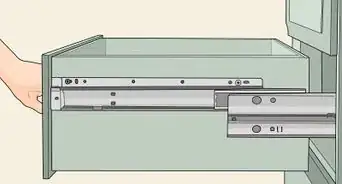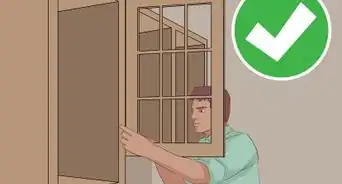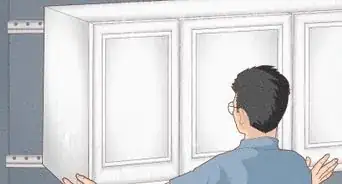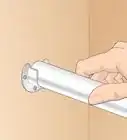This article was co-authored by Mike Katona. Mike Katona is a DIY Home Improvement Specialist and the Co-founder of ShabbyChicHouse. With experience dating back to the early 2000s, he specializes in building new homes, home design, and decor. Mike has been featured in publications such as Real Homes and MSN Lifestyle. He has also been named one of Feedspot's Top 100 Home Improvement Bloggers.
There are 11 references cited in this article, which can be found at the bottom of the page.
This article has been viewed 552,574 times.
European-style cabinet hinges are long, metal hinges that stay concealed inside cabinets. Because they allow you to adjust a door’s positioning with little more than a screwdriver, they have become a popular option for frameless cabinets. Each screw on the hinge lets you move the door in a specific direction, like up and down or left and right. Some hinges also have an adjustable tab that enables the door to close softly on its own. Whether you have a new or an old cabinet door, you can tweak it with just a few simple adjustments.
Steps
Checking the Position of the Doors
-
1Close the cabinet doors and look at their positioning. It will help you determine what kind of adjustments you need to make. First, check that each door lines up with its neighbors. Look for any doors that look too high, too low, have a gap between them, or overlap one another too much. Make sure the doors close all the way as well.[1]
- Note all the problems with each door’s positioning, since some of them may require a couple of adjustments. For example, one could be crooked and also need to be raised. Plan on tackling the adjustments one at a time.
-
2Open the door wide so that you can access the hinge. Each door has a hinge mounted to it and the inside surface of the cabinet. Swing the door all the way open to fully extend the hinge. You will then be able to reach the screws on the inner part of the hinge.[2]
- Euro-style hinges connect to a plate mounted on the cabinet door. You will see a pair of screws securing the plate to the door, but they don’t control the hinge at all. They are only there to hold the hinge in place.
Advertisement -
3Hold the door steady before you begin adjusting it. Adjusting Euro-style hinges is easier when you have another person holding onto the door. Let someone else brace the door while you loosen the screws. They can prevent the door from falling out of alignment and allow you to reposition it once it is able to be moved.[3]
- If you’re working alone, you can still take care of the adjustments. However, keep a firm grip on the door at all times in case it comes loose.
Repositioning a Standard Euro-Style Cabinet Door
-
1Use the upper and lower screws to move the door vertically. Each hinge has a pair of screws oriented vertically. One will be above the hinge and the other will be below it. Turn these screws counterclockwise to loosen them until you are able to move the door up or down. Tighten the screws back up when you’re done with the adjustment.
- Try to keep the door flush with the bottom of the cabinet and about 4 mm (0.16 in) from the top of the cabinet. That is the perfect height for most cabinet doors.
- The door will be unsteady when you loosen the screws for this adjustment, so keep a firm grip on it until you’re done tightening them again.
-
2Adjust the rear screw if you need to move the door in or out. The screw responsible for in and out adjustments is furthest from the door. Turn it counterclockwise to move the door away from the cabinet frame. Tightening it will move the door back toward the frame.[4]
- Ideally, there should be a gap of 1 mm (0.039 in) between the door and frame on most cabinets. After retightening the screws, you can test this by shutting the door to see if it glides closed smoothly.
- Adjust the hinges in this direction one at a time to prevent the door from falling out of position. If you loosen them all at once, support the door.
-
3Turn the innermost screw to shift the door horizontally. Rotate the hinge screw closest to the door. Turning it clockwise moves the door closer toward the far side of the cabinet frame. Turning it counterclockwise moves the door back toward the hinge. Keep making minor adjustments to center the door on the frame and reduce any gaps between adjacent doors.[5]
- For example, adjust the screw to move the door over. Leave a 1 to 2 mm (0.039 to 0.079 in) gap between this door and the next one.
- If the door isn’t hanging straight, adjust the top and bottom hinges in different directions.
-
4Close the cabinet doors after each adjustment to check your progress. Make gradual corrections to avoid throwing the doors out of alignment. After turning the hinge screws, shut the door, take a step back, and check the door’s positioning. Open it back up if you need to make further adjustments.[6]
- Although shutting the door so often can seem tedious, it helps prevent the door from moving too much. Take it one adjustment at a time so you don’t end up needing to make big corrections later.
Adjusting a Door with a Soft-Close Hinge
-
1Turn the first screw to shift the door horizontally. With the door open, look for a single screw along the front edge of the hinge. Expect it to be facing out from the hinge toward you. Use a Phillips screwdriver to twist it. The door slides to the left when you turn the screw counterclockwise and to the right when you turn it in the opposite direction.[7]
- Although the soft-close type of Euro-style hinges have multiple screws, they are always in the same order. You will see them in a line on the cabinet side of the hinge.
-
2Adjust the middle screw to move the door up and down. Look for the vertical adjustment screw in the center of the hinge, usually recessed inside of it. Reach in with a screwdriver to loosen it by turning it counterclockwise. Once you have the door where you want it, tighten the screw back up.[8]
- This screw is easy to reach with an ordinary screwdriver. It isn't recessed deeply at all, so finding it isn't a problem.
-
3Use the third screw to move the door in and out. The third screw is close to the hinge’s back edge inside the cabinet. Turn the screw counterclockwise to move the door out toward you. Twist it clockwise to push the door back in toward the cabinet. Use it to center the door in the frame.[9] [10]
- Watch the gap between the open door and the cabinet. You can use it as a reference to determine when the door is in the right place.
-
4Move the hinge tab to set the door’s closing resistance. Check the part of the hinge attached to the door. You should be able to spot a small plastic tab inside the mounting plate. You can pull the tab out or slide it back in to change how smoothly the door closes when you try shutting it. Depending on how heavy the cabinet door is, one setting may be better than another one.[11]
- Push the tab all the way in if you have small, light doors. This setting allows the door to close almost all of the way before the tab catches it and lets it close softly.
- The medium setting is fine for most cabinet doors. Pull the tab halfway out for it. If you have big, heavy doors, slide the tab out as far as you can.
-
5Open and close the door once to finish the adjustment. Shut the door, open it all the way up, and then close it again. Cycling the door this way resets the hinge’s tab so it works according to the adjustments you made. Check the door’s positioning as well to determine if you need to make any additional adjustments.[12]
- If the door doesn’t close smoothly, then you may need to move the tab to a different setting. Use the screws if you need to reposition the door over the cabinet frame.
Community Q&A
-
QuestionThe face plate on the front of my European hinge has come off of the back part of the hinge. Is there a trick to snapping the front of the hinge to the back section?
 Community AnswerAs shown in step 3 above, directly to the left of the screwdriver tip is a lever that releases the hinge from its mount. On the opposite end, directly under the hinge, are a set of hooks that slide into the back of the hinge mount, allowing the hinge to pivot toward the inside of the cabinet to lock the aforementioned lever. If the hooks are not aligned properly in the hinge channel, the lever cannot lock into place. Try to adjust the hooks up or down to seat properly in the channel and it will snap into place.
Community AnswerAs shown in step 3 above, directly to the left of the screwdriver tip is a lever that releases the hinge from its mount. On the opposite end, directly under the hinge, are a set of hooks that slide into the back of the hinge mount, allowing the hinge to pivot toward the inside of the cabinet to lock the aforementioned lever. If the hooks are not aligned properly in the hinge channel, the lever cannot lock into place. Try to adjust the hooks up or down to seat properly in the channel and it will snap into place. -
QuestionWhy does my hinge make a snapping noise when opening and closing?
 Community AnswerThere is probably some deformity with the hinge. Check it to see if it has any dents or protrusions.
Community AnswerThere is probably some deformity with the hinge. Check it to see if it has any dents or protrusions. -
QuestionHow do I adjust the drawers that keep hitting each other when they're being closed?
 Community AnswerTry repositioning them by undoing the screws.
Community AnswerTry repositioning them by undoing the screws.
Warnings
- Loosening the hinge screws can cause the door to come loose, so be prepared to support it. Get someone to help if holding the door and turning a screwdriver is too much to manage alone.⧼thumbs_response⧽
Things You'll Need
- Phillips screwdriver
References
- ↑ https://www.youtube.com/watch?v=Bd7sbYWGpXw&feature=youtu.be&t=80
- ↑ https://www.familyhandyman.com/smart-homeowner/all-about-euro-hinges/
- ↑ https://www.familyhandyman.com/kitchen/diy-kitchen-cabinets/home-repair-how-to-fix-kitchen-cabinets/
- ↑ https://www.familyhandyman.com/kitchen/diy-kitchen-cabinets/home-repair-how-to-fix-kitchen-cabinets/
- ↑ http://www.kbcabinetmaking.com.au/unit8_adjusting_onsite/section1_making_adjustments/lesson1_doors.htm
- ↑ https://www.youtube.com/watch?v=Bd7sbYWGpXw&feature=youtu.be&t=151
- ↑ https://www.youtube.com/watch?v=nPoN9h10YDY&feature=youtu.be&t=139
- ↑ https://www.youtube.com/watch?v=P0NQnMIInWY&feature=youtu.be&t=56
- ↑ https://www.thisoldhouse.com/cabinets/21016567/how-to-install-concealed-cabinet-hinges
